
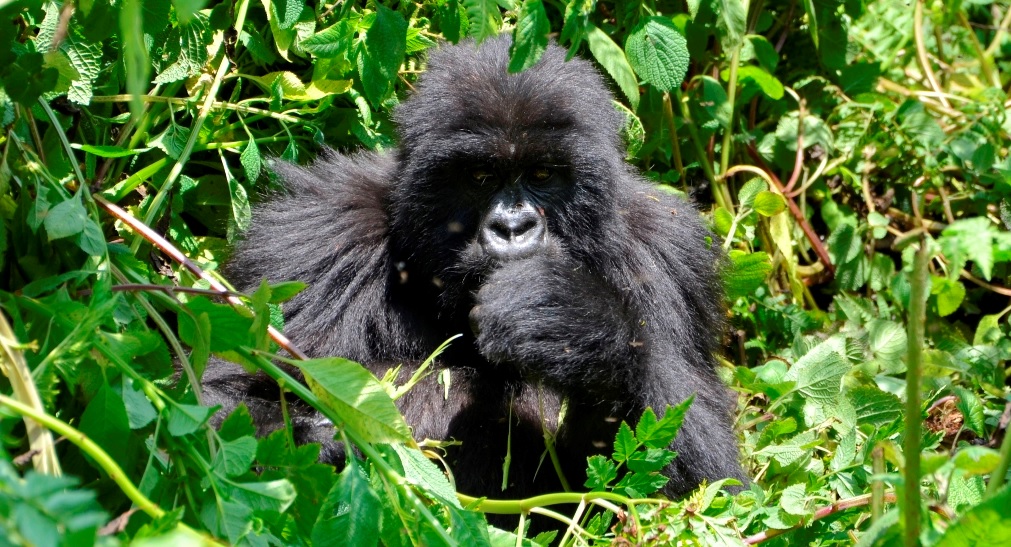
Home to over half of the world's endangered mountain gorilla's, the word Bwindi actually means 'impenetrable' in the local language and this double warning could not be more appropriate.
Tangled vegetation draped over a rugged landscape of deep valleys and steep slippery ridges, this ancient rainforest is the perfect home for its most famous residents, the endangered mountain gorilla. Although a trek through this rugged terrain is far from easy, a close encounter with these gentle giants is a wildlife experience unsurpassed by anything else.
Located in the southwestern part of Uganda, Bwindi Impenetrable National Park covers 327 sq km and was originally gazetted in 1942 as a forest reserve. In 1992 Bwindi was upgraded to a national park and in 1994 declared a world heritage site. As part of the Albertine Rift Valley and as one of the largest natural forests in East Africa, Bwindi is also part of one of Africa’s most important conservation areas.
The park is inhabited by a population of about 340 individuals of Mountain Gorillas (Gorilla beringei beringei), commonly referred to as the Bwindi population, which makes up almost half of all the mountain gorillas remaining in the world. The rest of the worldwide mountain gorilla population is in the nearby Virunga Mountains which is shared by Rwanda, Uganda and Democratic Republic of Congo.
Queen Elizabeth National Park
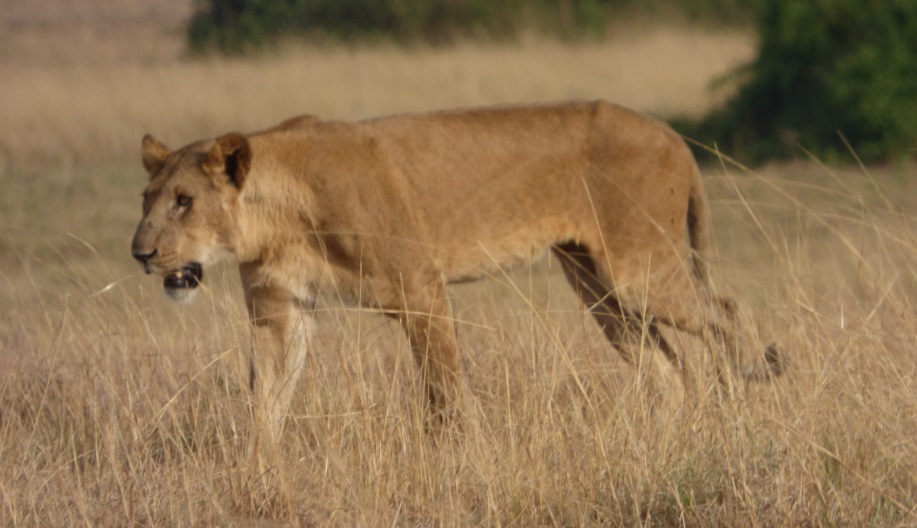
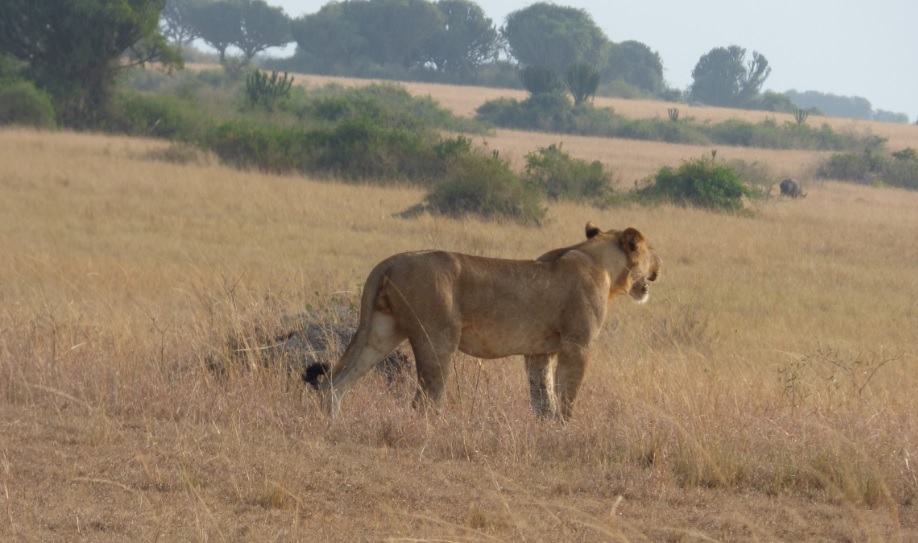
Queen Elizabeth National Park is understandably Uganda’s most popular tourist destination. The park’s diverse ecosystems, which include sprawling savanna, shady, humid forests, sparkling lakes and fertile wetlands, make it the ideal habitat for classic big game, ten primate species including chimpanzees and over 600 species of birds.
Set against the backdrop of the rugged Rwenzori Mountains, the park’s magnificent vistas include dozens of enormous craters carved dramatically into rolling green hills, panoramic views of the Kazinga Channel with its banks lined with hippos, buffalo and elephants, and the endless Ishasha plains, whose fig trees hide lions ready to pounce on herds of unsuspecting Uganda kob.
The area around Queen Elizabeth National Park (QENP) has two pronounced rainy seasons, due to its location on the equator and the annual migration of the Inter tropical Convergence Zone (ITCZ). The onset of the first rains is typically around late February for all four stations. The onset of the second rains is typically around mid-August. There is no significant difference in the duration of the two rainy seasons at any station. There is equally no significant difference in the amount of rainfall received during the two rainy seasons at any station, except for at Kitwe, where more rainfall occurs during the second rains than during the first rains.
Murchison Falls National Park
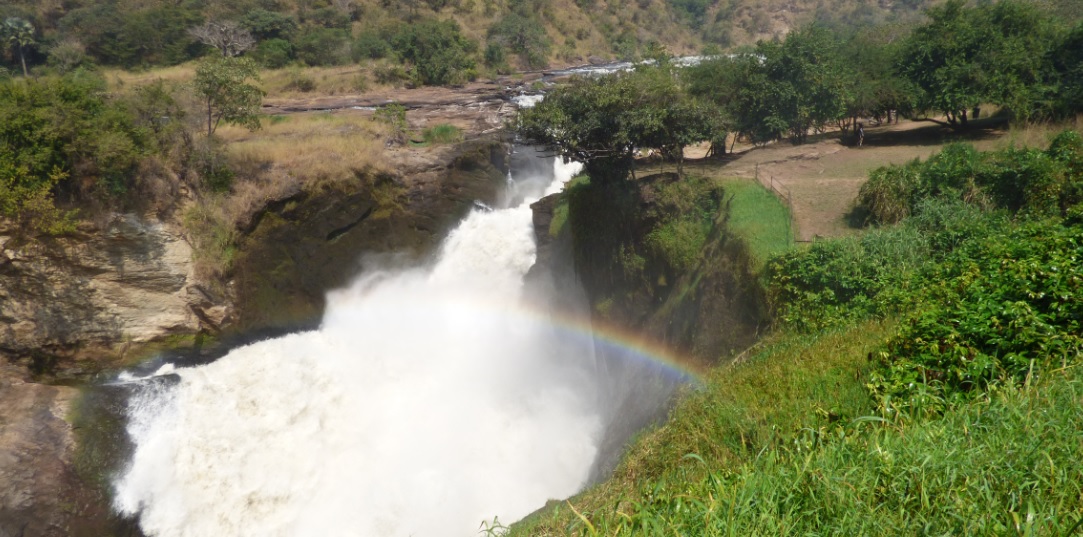
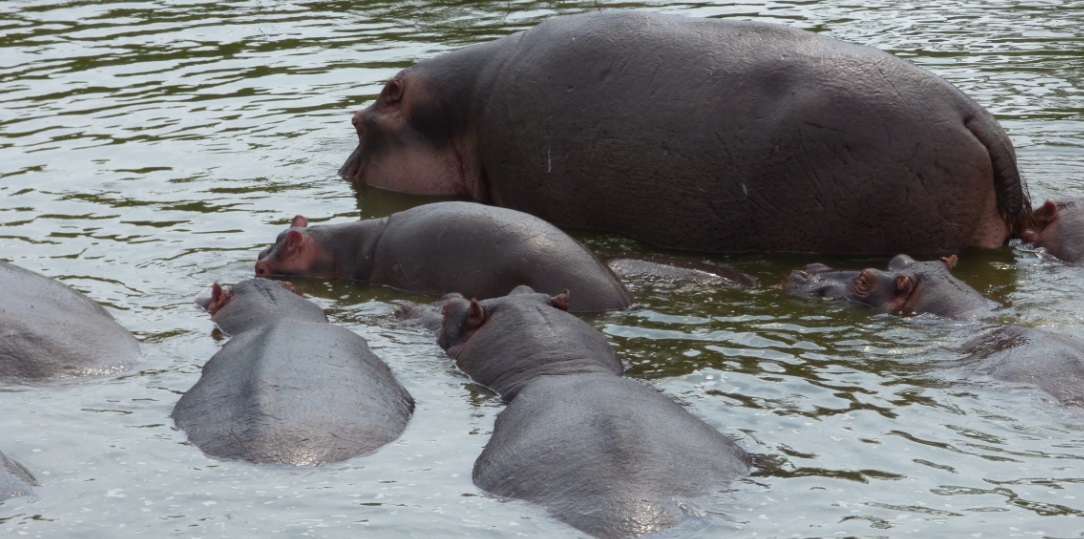
Murchison Falls National Park lies at the northern end of the Albertine Rift Valley, where the sweeping Bunyoro escarpment tumbles into vast, palm-dotted savanna. First gazetted as a game reserve in 1926, it is Uganda's largest and oldest conservation area, hosting 76 species of mammals and 451 birds.
The park is bisected by the Victoria Nile, which plunges 45m over the remnant rift valley wall, creating the dramatic Murchison Falls, the centerpiece of the park and the final event in an 80km stretch of rapids.
From rolling savannah and tall grasslands to thick bush and woodlands, the bio-diversity of this park never ceases to amaze visitors and residents alike. The park and the Greater Murchison Falls Conservation Area support an abundance of flora and fauna, boasting 76 species of mammals, 10 species of primates, 250 species of butterflies, and more than 465 species of plants.
Large mammals include lion, leopard, elephant, hippopotamus, Rothschild’s giraffe, Cape buffalo, hartebeest, oribi, warthog, and Uganda kob. The Nile corridor provides year-round water for all these animals as well as Uganda’s largest population of Nile crocodile.
The Rabongo and Budongo Forest Reserves provide refuges for chimpanzee and other primates including black-and-white Colobus, Grey-cheeked Mangabeys, Vervet monkeys, Red-tailed monkey and Olive Baboons. The forests are also the home of some 360 species of birds and 290 different types of butterflies.
A total of 460 bird species have been sighted in the park, the most sought after of these being the pre-historic looking shoebill stork which is found along the lower stretch of the river towards the estuary into Lake Albert. More common birds that are seen include Goliath heron, Egyptian geese, pelican, bee-eaters, kingfishers, hornbill, cormorant and saddle-bill stork.
Kidepo Valley National Park

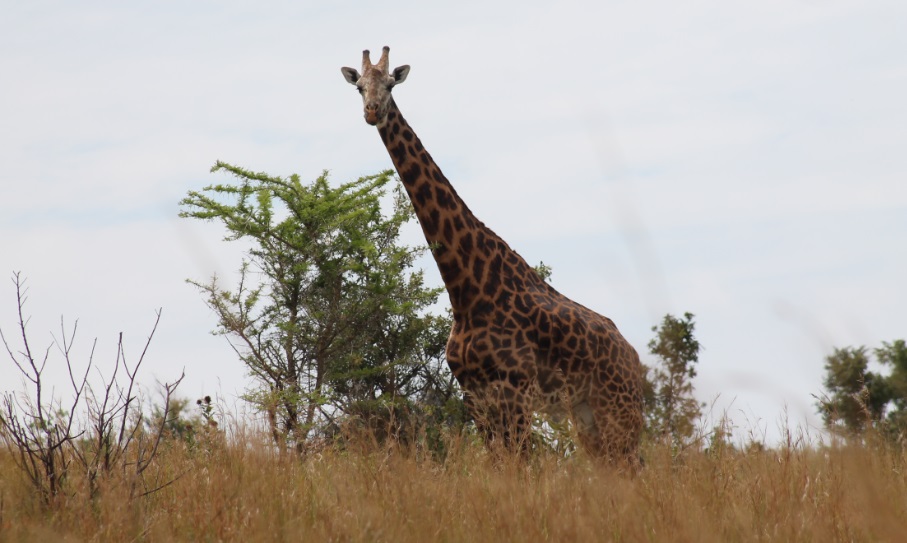
Kidepo Valley National Park lies in the rugged, semi arid valleys between Uganda’s borders with Sudan and Kenya, some 700km from Kampala. Gazetted as a national park in 1962, it has a profusion of big game and hosts over 77 mammal species as well as around 475 bird species.
The park contains one of the most exciting faunas of any Ugandan national park. Along with the neighboring Karamoja region, it houses many species found nowhere else in Uganda, including the greater and lesser kudu, eland and cheetah. Carnivores here include the lion, leopard, spotted hyena and black-backed and side-striped jackals. Other large species regularly seen here are elephant, Burchell’s zebra, bushpig, warthog, Rothschild’s giraffe, Cape buffalo, bushbuck, bushduiker, Defassa waterbuck, Bohor reedbuck, Jackson’s hartebeest and oribi.
The park boasts an extensive bird list of around 475 species, making it second only in Uganda to Queen Elizabeth National Park. A few species of note are the Ostrich, Kori Bustard and Karamoja Apalis.
Kidepo is notable for its birds of prey. Of the 56 species recorded, 14 – including Verreaux’s Eagle, Egyptian Vulture and Pygmy Falcon – are believed to be endemic to the Kidepo and Karamoja region.
Lake Mburo National Park


Lake Mburo National Park is a compact gem, located conveniently close to the highway that connects Kampala to the parks of western Uganda. It is the smallest of Uganda’s savannah national parks and underlain by ancient Precambrian metamorphic rocks which date back more than 500 million years. It is home to 350 bird species as well as zebra, impala, eland, buffalo, oribi, Defassa waterbuck, leopard, hippo, hyena, topi and reedbuck.
Together with 13 other lakes in the area, Lake Mburo forms part of a 50km-long wetland system linked by a swamp. Five of these lakes lie within the park’s borders
Activities in Lake Mburo National Park include; Game drives in the rolling hills and open grasslands, Boat trip along Lake Mburo, Nature walk, sport fishing, Forest walk in Rubanga which offers an opportunity to view different bird species, as well as adventure activities like horseback riding and quad biking.
